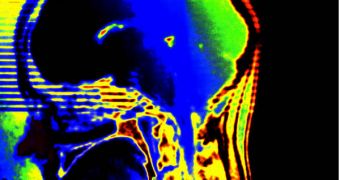After more than 50 years of continuous study, researchers can now rest assured that a way of controlling someone's neurons is on its way. Colleagues from the Massachusetts Institute of Technology (MIT) have developed a new scientific investigation method, which allows them to directly influence the brain cells of mice, by simply using a small laser. This approach is part of the newly developed field of optogenetics, which combines studying and modifying genes with the aid of some type of light.
Gamma brain oscillation patterns are part of the natural cyclic wave emissions that the human brain puts out each moment. They are believed to play a role in integrating and facilitating consciousness, attention, learning and memory. But, thus far, experts have had no way of testing to see if this hypothesis is true. Now, the researchers at MIT are fairly convinced that they have successfully developed a way of doing just that, testing for associations depending on brain-wave patterns.
“Gamma waves are known to be [disrupted] in people with schizophrenia and other psychiatric and neurological diseases. This new tool will give us a great chance to probe the function of these circuits,” Howard Hughes Medical Institute investigator Li-Huei Tsai, who is also the MIT Picower professor of Neuroscience, explained. “These oscillations are thought to be controlled by a specific class of inhibitory cells known as fast-spiking interneurons. But until now, a direct test of this idea was not possible,” MIT McGovern Institute for Brain Research postdoctoral fellow Jessica Cardin, who is also the co-lead of the new study, added.
“We've shown for the first time that it is possible to induce a specific brain state by activating a specific cell type,” McGovern Institute investigator Christopher Moore, who is also an associate professor of neurosciences and a co-author of the research, shared. In order to make the tests possible, the researchers used a protein known as channelrhodopsin-2 (ChR2). This allowed the nerve cells to be more sensitive to laser light.
“By combining several genetic tricks, we were able to express ChR2 in different classes of neurons, allowing us to manipulate their activity with precise timing via a laser and an optical fiber over the brain,” Picower Institute postdoctoral fellow Marie Carlén, who is also a co-author of the new study, added.

 14 DAY TRIAL //
14 DAY TRIAL //